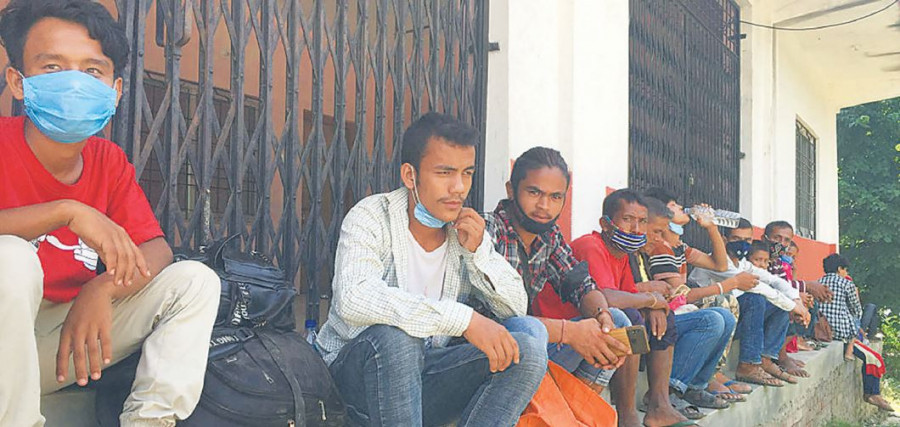Editorial
Create more jobs
The scheme of a minimum of 100 days of work is, at its best, a complementary project.
Unemployment is one of Nepal’s biggest problems. Every year, hundreds of thousands of youths migrate to work in life-threatening and slave-like conditions. Many young Nepalis unable to find jobs in the country become desperate and fall prey to human traffickers, and find themselves trapped in forced labour and unimaginable circumstances.
Tens of thousands of people have lost their jobs in the past year, mostly in small and medium scale enterprises and early-stage start-ups. According to the latest government survey, 89.91 percent of firms are currently operating partially while 10.81 percent have shut down. Among the firms that have shut down, 75 percent are small and micro enterprises, which ran out of cash resulting in many people losing their jobs. With no certainty when the economy will begin to rebound, the job market stays stalled.
While these preliminary figures warn of a bigger problem for the country that has plunged into a political crisis amid a public health emergency, the number of job-seekers who have applied for employment opportunities under the Prime Minister Employment Programme this fiscal year has more than doubled. Some 743,160 candidates compared to 370,734 in the fiscal year 2019-20 have registered under the programme.
While the number of applicants should encourage the government to do better and run the programme more effectively to ensure that the jobs go to the most vulnerable, it also needs to think about what it will do for the rest of jobless citizens who have no option but to migrate. It also needs to ask if this scheme is feasible to start with. With only 16,790 jobs created in the past eight months, doubts are high if the scheme that seeks to provide a minimum of 100 days of wage-employment will work when the number of applicants already exceeds the government target of 200,000 jobs.
Creating jobs is no easy task. The flagship employment programme introduced by the Oli administration long invited criticism for taking loans for its implementation while the allocated budget remains mostly unspent. In the first year of its implementation, 175,909 beneficiaries were employed for 13 days on average. In the second year, only 105,634 beneficiaries were employed for 15 days on average. While the results speak for themselves, the government last year doubled the programme’s budget to Rs11.6 billion and accepted a soft loan of approximately Rs14 billion from the World Bank.
Last year, a government task force which studied the pandemic’s impact on the foreign employment sector and the economy said that the country would need to create 1.5 million jobs to avoid an impending unemployment crisis. We are in an extraordinary situation where the government must identify and assist businesses that need support and subsidies to stay afloat and sustain jobs. We must understand that it is impossible to create jobs and expand the tax base without creating an environment for businesses to flourish. The government scheme of a minimum of 100 days of work at its best is a complementary project that aligns with the country’s goal to create and sustain jobs.




 12.12°C Kathmandu
12.12°C Kathmandu














